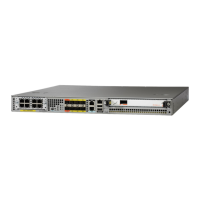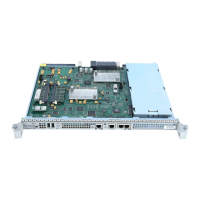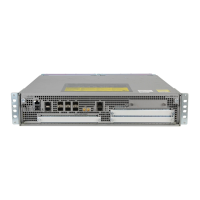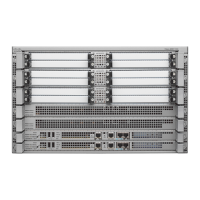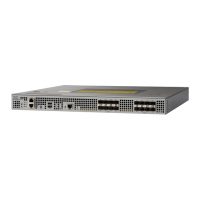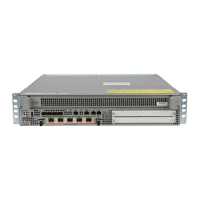to the priority of the other configured services. Each WCCP service has a priority value as part of its definition.
When an interface is configured with more than one WCCP service, the precedence of the packets is matched
against service groups in priority order.
The priority of a WCCP service group cannot be configured via Cisco IOS software.Note
With the ip wccp check services all or the ipv6 wccp check services all command, WCCP can be configured
to check all configured services for a match and perform redirection for those services if appropriate. The
caches to which packets are redirected can be controlled by a redirect ACL and by the service priority.
If no WCCP services are configured with a redirect ACL, the services are considered in priority order until a
service is found that matches the IP packet. If no services match the packet, the packet is not redirected. If a
service matches the packet and the service has a redirect ACL configured, then the IP packet will be checked
against the ACL. If the packet is rejected by the ACL, the packet will not be passed down to lower priority
services unless the ip wccp check services all or the ipv6 wccp check services all command is configured.
When the ip wccp check services all or the ipv6 wccp check services all command is configured, WCCP
will continue to attempt to match the packet against any remaining lower priority services configured on the
interface.
WCCP—Configurable Router ID Overview
WCCP uses a router ID in its control messages that a WCCP client can use to uniquely identify a particular
WCCP server. The router ID is an IP address and is used as the source address of any WCCP-generated
Generic Routing Encapsulation (GRE) frames. Prior to the WCCP—Configurable Router ID feature, WCCP
selected a router ID using an automatic mechanism; the highest reachable IP address on the system (or the
highest loopback IP address, if there is one) was used as the WCCP router ID. The highest IP address on the
system is not always the best choice as the router ID or as the source address of GRE frames. A change in
addressing information on the system may cause the WCCP router ID to change unexpectedly. During this
changeover period, WCCP clients briefly advertise the existence of two routers (the old router ID and the new
router ID) and GRE frames are sourced from a different address.
The WCCP—Configurable Router ID feature enables you to define a WCCP source interface from which the
router ID will be obtained. The IP address of this configured source interface is then used as the preferred
WCCP router ID and WCCP GRE source address. When a WCCP router ID is manually configured, the router
ID does not change when another IP address is added to the system. The router ID changes only when a new
router ID is manually configured using the ip wccp source- interface or the ipv6 wccp source- interface
command, or when the address on the manually configured interface is no longer valid.
WCCP Troubleshooting Tips
CPU usage may be very high when WCCP is enabled. The WCCP counters enable a determination of the
bypass traffic directly on the router and can indicate whether the cause is high CPU usage due to enablement
of WCCP. In some situations, 10 percent bypass traffic may be normal; in other situations, 10 percent may
be high. However, any figure above 25 percent should prompt a closer investigation of what is occurring in
the web cache.
If the counters suggest that the level of bypass traffic is high, the next step is to examine the bypass counters
in the content engine and determine why the content engine is choosing to bypass the traffic. You can log in
IP Application Services Configuration Guide, Cisco IOS XE Release 3S (Cisco ASR 1000)
100
WCCPv2—IPv6 Support
WCCP—Configurable Router ID Overview
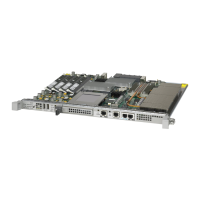
